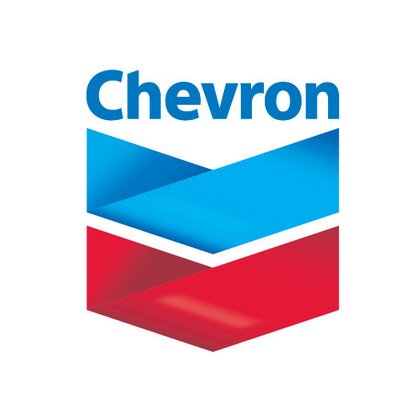
For 2014, Chevron posted EPS of $10.14 on revenues of $211.97 billion, compared with EPS of $11.09 and revenues of $228.85 billion in the previous year. Analysts were looking for EPS of $9.75 on revenues of $212.07 billion.
U.S. upstream profits fell from $803 million in the fourth quarter of 2013 to $432 million, even though net hydrocarbon production rose from 650,000 barrels of oil equivalent a day to 673,000 barrels a day. The average realized price per barrel in the United States fell from $90 in the year-ago quarter to $66, while the company’s realized average price for natural gas remained flat at $3.34 per thousand cubic feet.
Pause a moment and consider that now that crude is trading at less than $45 a barrel, what will Chevron’s realized price be like in the first quarter. It may not drop $20 a barrel, but $10 a barrel lower is not out of the question.
Production fell by 17,000 barrels a day in the company’s international upstream segment and earnings fell from $4.05 billion to $2.24 billion. Currency translation effects added $453 million to 2014 quarterly earnings and $153 million to 2013 profits. The average realized price per barrel fell from $101 to $68 year-over-year.
The other news everyone was waiting for was announced in a separate press release. Chevron said it would spend $35 billion on capex in 2015, a drop of 13% from 2014 spending of $40.32 billion. Of the 2015 total, some $4 billion is coming from affiliates and does not require any cash from Chevron.
ALSO READ: How Long Can Valero, Phillips 66 Turn Cheaper Crude Into Profits?
Spending on U.S. upstream projects is set at $8.2 billion, down from $8.8 in 2014. International upstream drops from $28.32 billion in 2014 to a planned $23.4 billion this year. Global downstream spending is set at $2.8 billion, compared with $2.59 billion in 2014.
In the upstream category, about $12 billion is targeted at existing base-producing assets, with about $3.5 billion of that total going into shale and tight oil and gas projects. Roughly $14 billion is related to major capital projects, primarily liquid natural gas (LNG) projects (about $8.5 billion) and deepwater developments (about $3.5 billion). Global exploration funding totals about $3 billion.
Downstream earnings rose from $265 million in the United States in the fourth quarter of 2013 to $889 million in 2014. Chevron attributed that gain primarily to higher gains on asset sales, although it said that higher margins also contributed. Refinery input rose by 56,000 barrels a day and refined product sales rose by 9,000 barrels a day.
Internationally, fourth-quarter refinery input fell by 56,000 barrels a day and refined product sales fell 9,000 barrels a day year-over-year. Earnings rose from $125 million to $629 million on favorable impacts from derivative instruments and higher margins on sales.
The company’s CEO said:
Our 2014 earnings were down from the previous year, largely due to the sharp decline in crude oil prices. Improved downstream results and higher gains on asset sales related to our divestment program partially offset the effect of lower crude prices. … We enter 2015 with the financial strength to meet the challenges of a volatile crude price environment and with significant efforts underway to manage to a lower cost structure and capital spend rate.
Chevron repurchased $1.25 billion in common stock during the fourth quarter and buybacks totaled $5 billion in 2014. The company pays a $1.07 quarterly dividend (4% dividend yield). The quarter’s cash flow from operations totaled $6.5 billion, down from $10.5 billion in the year-ago quarter. Full-year cash flow totaled $31.5 billion, compared with $35 billion in 2013.
ALSO READ: Short Sellers Pounce on Major Oil and Gas Stocks
The earnings announcement did not include guidance, but the consensus estimate for the first quarter calls for EPS of $0.77 on revenues of $21.57 billion. For the full year, EPS and revenues are estimated at $4.73 and $154.19 billion, respectively.
Chevron enters 2015 with $13.2 billion in cash and other liquidity, down $3.3 billion compared with at the end of 2013. Total debt rose by $7.4 billion to $27.8 billion.
Chevron’s shares traded down about 1.5% shortly after the opening bell, at $101.36 in a 52-week range of $100.15 to $135.10. Thomson Reuters had a consensus analyst price target of around $117.00 before the earnings report.
The Average American Has No Idea How Much Money You Can Make Today (Sponsor)
The last few years made people forget how much banks and CD’s can pay. Meanwhile, interest rates have spiked and many can afford to pay you much more, but most are keeping yields low and hoping you won’t notice.
But there is good news. To win qualified customers, some accounts are paying almost 10x the national average! That’s an incredible way to keep your money safe and earn more at the same time. Our top pick for high yield savings accounts includes other benefits as well. You can earn up to 3.80% with a Checking & Savings Account today Sign up and get up to $300 with direct deposit. No account fees. FDIC Insured.
Click here to see how much more you could be earning on your savings today. It takes just a few minutes to open an account to make your money work for you.
Our top pick for high yield savings accounts includes other benefits as well. You can earn up to 4.00% with a Checking & Savings Account from Sofi. Sign up and get up to $300 with direct deposit. No account fees. FDIC Insured.
Thank you for reading! Have some feedback for us?
Contact the 24/7 Wall St. editorial team.




